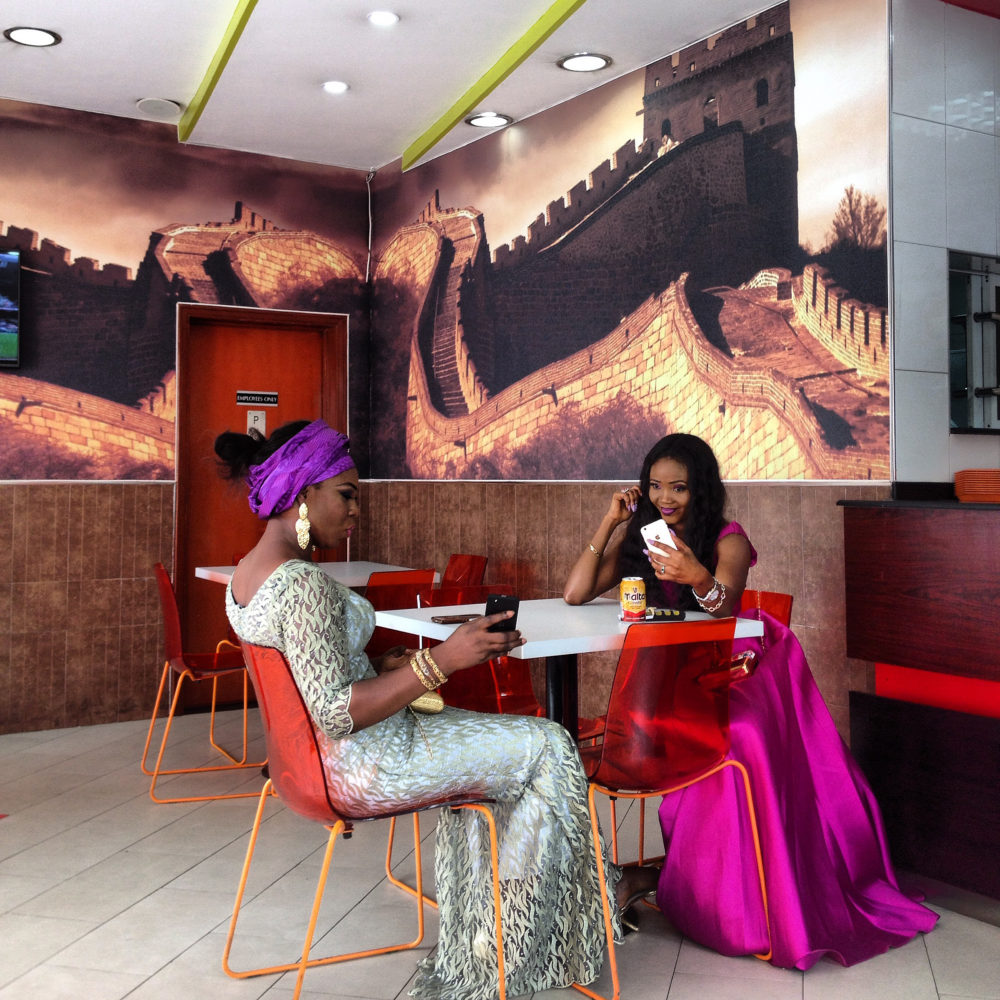The commercial rebirth of counterculture
In the late 1960s, artist and futurist Stewart Brand introduced a unique publication: the Whole Earth Catalog. At a time when information was neither as universally accessible nor abundant, the Whole Earth Catalog was a groundbreaking resource – a manual for holistic living before wellness was a hashtag. While the catalogue indeed operated as a grassroots marketplace, it far transcended that primary function, offering encyclopaedic “access to tools” through products, explanatory charts, step-by-step guides, and more. Items listed were required to be either high quality or low cost, useful as a tool, relevant to education, or easily available by mail. For those seeking alternative lifestyles, the Whole Earth Catalog became an indispensable bridge between innovative ideas and actionable practice, defining both a philosophy and a recipe for living a life more attuned to nature and a spiritual power higher than oneself.

The appearance of the Whole Earth Catalog reflected this radical content. Besides the iconic cover, which featured stark photography of the planet – a direct result of founder Brand’s own 1966 campaign to have NASA release a photo of the “whole earth” – the imagery used within the catalogue itself was notably eclectic, the result of a system where every listing was provided by individual contributors unrestricted by guidelines. A single spread might include an off-kilter mix of botanical illustrations, high-contrast black-and-white photography, and hand-drawn diagrams. Brand actively rejected design norms of balance and breathing room in layouts for the Whole Earth Catalog, saying, “Glamorous white space has no value in a catalog except as occasional eye rest. I figure the reader can close his eyes when he’s tired.” The publication embraced unconventional typographic and compositional approaches as well: a simple type system made up of the utilitarian Univers and the psychedelic mainstay Windsor (itself a resurgence of a typeface designed during another anti-establishment artistic period, the Arts and Crafts movement) peppered irregular, densely populated pages – occasionally deviating into unexpected typesetting approaches like diagonal or circular text. Together, these deliberately informal design cues accentuated the publication’s core philosophies of practical utility and separation from mass production.

But the design and content of the Whole Earth Catalog, as well as other associated countercultural publications of the time like Ram Dass’s Be Here Now, often connected two seemingly disparate domains: science and spirituality. During the ’60s and ’70s, these realms were not always distinct; at this moment in time marked by tremendous social and political upheaval, there existed a unique intersection between the empirical world and the esoteric one. This confluence was, in part, a reaction to rapid technological advancements like space exploration, which prompted individuals to contemplate their place within the universe. While science sought to unravel the mysteries of the cosmos, quantum mechanics, and the very fabric of reality, many began to see parallels between these cutting-edge theories and ancient spiritual teachings. Spirituality during this era, especially within the New Age movement, embraced academic vocabulary and concepts, with terms like “energy”, “vibration”, and “frequency”, typically reserved for scientific discourse, now used to describe occult phenomena instead. Similarly, the exploration of consciousness, whether through meditation, psychedelics, or other means, was likened to scientific experimentation – a journey of discovery into the inner workings of the mind.

It’s no surprise, then, that formal visual tools previously used to illustrate real-world phenomena soon transcended into the metaphysical; diagrams and gradients in particular became a key component of the New Age visual lexicon. Diagrams served a dual purpose: they provided a semblance of empirical validation to arcane concepts, making them more palatable to a generation raised on science and reason, and they visually represented abstract spiritual ideas, making them more accessible and comprehensible. Gradients too toed the line of the objective and the subjective, speaking literally to concepts like the aura while also reflecting a sense of order and mathematical precision. Peek back further into the 20th century and you’ll find echoes of this blend between celestial visuals and thecorporeal realm in the works of spiritualist artists like Hilma af Klint as well; her gradient-filled abstractions were a response to the dual pull of mysticism and the era’s groundbreaking discoveries like X-rays and electrons. Her works, and others by artists throughout the 20th century like Anna Cassel, Wassily Kandinsky, and Peter Halley, serve as a testament to humanity’s age-old quest to bridge the rational with the ethereal – often relying on visual cues pulled from the scientific community to do so.

This phenomenon isn’t just a relic of the past. Today, amidst rapid technological advancements like AI and a fractured landscape of cultural ideologies, we find ourselves at a similar philosophical and visual crossroads. The influence of organised religion and community organisations on daily life has lessened for many, leaving a vacuum filled increasingly by consumerism. Metaphysical modernism, misinfographics, neo-spiritualism, or pharmacore – whatever you call it, esoteric nostalgia is vibrating wavelengths everywhere, especially on the Instagram pages of contemporary wellness brands. Companies hawking everything from yoga mats to skincare have embraced the aesthetics of the Whole Earth Catalog, enticing consumers into a commercialised nirvana. Spend enough time scrolling and you’ll come across squares of grainy multicolour backdrops punctuated by delicate linework, each tile offering a roadmap to navigating emotions, introspective tools, or guiding affirmations. Meanwhile, on the feed of a probiotic brand, overlapping diagrammatic rings frame a list of connected systems, from body to community to universe, while interlocking circles provide the blueprint to a “balanced smoothie”. The original intent behind these repurposed formal motifs – to weave together the logical and the mystical, challenge societal norms, and encourage profound personal transformation – feels increasingly overshadowed by a simpler, more marketable message: buy this product and be better. Earthly possessions are no longer a barrier to enlightenment; they’re the keys.
A pivotal tension unfolds within the wellness sector: its intimate relationship to our bodies requires a genuine, human touch, echoing time-honoured remedies passed down through generations. Yet, to gain the trust of the modern, discerning consumer, it equally demands an aura of scientific rigour, dispelling any shade of mere pseudoscience. Brands astutely navigate this dual demand via an equal balance of countercultural and clinical touchpoints. By intermingling illustrations that feel pulled from the pages of a DIY zine with the streamlined precision of charts and graphs, commercial wellness endorses their efficacy and authenticity simultaneously. This balancing act is a calculated strategy to resonate with a consumer who reveres both the wisdom of the past and the validation of modern science. At best, spirituality provides a comforting veneer for companies peddling high-tech, VC-backed self-care products; at worst, scientific aesthetics serve as a smokescreen for an overpriced placebo. This marriage between spirituality and science isn’t always benign. As wellness brands and influencers mix and match aesthetics and ideologies from different eras, consumers can easily fall prey to misinformation; age-old scepticism of Western medicine easily tips into conspiratorial beliefs about microchips in vaccines. Wellness advocates with large audiences are increasingly pushing untested and potentially harmful therapies, pills, and essential oils, or even promoting a rejection of medical treatments in favour of ‘natural’ cures – all set against soft gradient backdrops and personal mantras. The insidiousness of this elevation of arcane solutions for physical ailments lies in the illusion of empowerment – believing that with the right herbs, essential oils, or meditation practices, one can bypass conventional medicine.

In the period surrounding the Whole Earth Catalog, wellness and self-improvement were inextricably linked to communal bonding and breaking free of capitalist expectations. Wellness practices were seen as acts of resistance: tools for personal and societal transformation that rebelled against the grind of productivity for productivity’s sake. There were, of course, more insidious aspects to the resistance-oriented spirit the Whole Earth Catalog represented – the paranoid preppers and survivalists or the eco-terrorists, to name a few – but these offshoots, however unsettling, were still driven by more radical ideologies that placed themselves in contrast to the mainstream culture. The wellness industry today, on the other hand, while still echoing sentiments of personal enlightenment, often does so through a different lens: optimising oneself for greater efficiency within the very system past movements resisted. Modern self-care, especially as marketed by luxury brands, has pivoted from being a path to liberation to becoming a means of “recharging” for the primary purpose of enhanced performance. McKinsey consultants aren’t microdosing LSD to expand their minds and love their neighbour; they’re taking it to spur entrepreneurial breakthroughs. The pursuit of wellbeing has incongruously been streamlined into yet another commodity – one that is traded, branded, and consumed with fervour in the quest for a personal equilibrium in modern life.

It’s telling that the ethos of the Whole Earth Catalog, with its grassroots quest for knowledge and empowerment, has roots intertwined with early technological developments. Stewart Brand himself, far from being an outsider to tech innovation, played a role in the iconic “Mother of All Demos” – a prophetic display of early graphical user interfaces. This deep-seated connection between the countercultural drive of the Whole Earth Catalog and the burgeoning realm of personal computing reflected a shared desire: to democratise access, be it to knowledge or technology. As Silicon Valley burgeoned, its new generation of tech innovators, including Steve Jobs, drew inspiration from this fusion of the hippie-dippie and technological. Jobs’ admiration for the Whole Earth Catalog (which he referred to as “sort of like Google in paperback form, 35 years before Google came along”) didn’t only result in technological marvels; it inadvertently wove the catalog’s countercultural tapestry into Silicon Valley’s techno-utopian ethos, planting seeds of the belief that technology alone could be the panacea for society’s ailments.
Despite their hubristic desire to change the very fabric of society, techy, direct-to-consumer wellness brands often position themselves as the ‘humble alternative’ to impersonal personal-care giants like Johnson & Johnson or Procter & Gamble. With brand-awareness at an all-time high, communications that mirror the aesthetics of the fringe – that look and act more likeindividual people or influencers – may be perceived as more trustworthy than overly polished corporate communications. What is an influencer if not a modern spiritual guru guiding the helpless flock? Mimicking the messaging and aesthetics of historic countercultural movements is just a case of further leveraging inherent trust in what is perceived as “authentic”. But while today’s wellness brands may use referential visual motifs like mixed imagery, grainy textures, and the appearance of low-quality paper stock in an attempt to capture the same sincerity they find in the Whole Earth Catalog, these aesthetic choices were hardly intentional in their first iteration. Instead, they often arose from constraints: a result of the desire to make a publication that was affordable and accessible to all. Other visual tropes seen in the catalogue, like the use of black-and-white photography, were simply the default of their time. As such, adopting them in the contemporary era becomes a surface-level emulation that misses the deeper ethos. If the Whole Earth Catalog were reborn today, it wouldn’t look like any modern wellness brand – it would look like Craigslist.

This “small and personal” facade (the reverse wellness mullet) is crucial for the success of these modern brands; it gives the illusion of a more ethical, more human-centred company fighting against the tyranny of free enterprise. In an article for New York magazine earlier this year, writer Emily Sundberg refers to this concept as “small-washing”, saying, “We know these minimalist-ish generic aesthetics are not connected to any true local origin, but we see them as indicative of some kind of authenticity.” But while their communication channels might echo the aesthetics of the grassroots, companies like probiotic brand Seed, with its recent $40 million series A round, and vitamin brand Ritual, with a $25 million series B, are every bit the corporate powerhouses they discreetly distance themselves from. Few embody the paradox of commercial wellness as pointedly as the sauna brand Ancient Ritual. Its experiential product, Arc, which features a “personalised wellness program” administered by an AI-powered counsellor, is advertised via diagrams of “self-realisation” and language around exploring one’s “inner world”. Yet, the gap between their marketing façade and the holistic spirit they allude to is stark; for $12,000, Arc’s sauna ultimately offers what amounts to an individual experience of luxury and solitude – a far cry from the community-driven ethos of the 1970s countercultural movements. Then again, perhaps the path to contemporary salvation isn’t spiritual ascension, but ascending the ladder of capitalism; to be the seller, not the buyer.
We’re certainly in a zeitgeist of commodifying empty spiritualism; we’re all sort of trying to find something to latch onto in a time that’s increasingly isolated and devoid of meaning. But while publications like the Whole Earth Catalog operated more like decentralised webs of knowledge – a shared repository that was constantly evolving, contributed to and drawn from by a wide array of individuals – platforms like Instagram are inherently more hierarchical. While hashtags, stories, or shared interests might create a semblance of community, the interactions remain largely transactional. The platform’s mechanics encourage passive consumption over active participation. The essence of ‘sharing’, in its truest sense – exchanging ideas, challenging perspectives, building upon collective knowledge – is conspicuously absent. Today’s digital platforms, while revolutionary in reach and potential, seem to have sidestepped this democratic ethos in favour of curated, algorithm-driven content dissemination and product advertising.

The Instagram approach to complex topics can perhaps trace its roots to more recent events; during the pivotal Black Lives Matter protests of 2020, Instagram underwent a marked transformation, becoming a crucial hub for political dissemination at a time when in-person conversation was severely limited by Covid-19. While historically a platform for curated snaps of luxury, leisure, and one’s “personal brand”, Instagram quickly became a conduit for pastel explainers on more sobering subjects like “The 10 Ways We are Racist Every Day”. This shift presented challenges, however; the platform’s native photo-sharing tools seemed at odds with the deep, text-heavy content that emerged. Users were increasingly encountering Instagram stories spanning dozens of slides, captions that felt more like a micro-thesis, or the ubiquitous ‘link in bio’ callout. Designers quickly adapted. Profound messages became repackaged into a more palatable format: concise and stylised, with text and image contained neatly within a single tile – no caption required. This redesign allowed content to be more easily shared, and ensured that a singular message would seamlessly weave through the diverse aesthetics of the explore page, even if its content felt worlds apart from the ‘fit check’ post it sat beside. This shift towards information that’s neatly buttoned up, easily shareable, and presented with an appealing aesthetic flair has bled out from activists to influencers to brands, seeding itself in the fabric of modern online discourse. The value of being shareable or viral has now superseded the depth and nuance that some subjects demand, leading to an age where complex topics are distilled to their most basic essence, sometimes sacrificing understanding for visibility. In this realm, wellness brands and their offerings are no exception. They too have learned to navigate and thrive in this ecosystem of simplified narratives and stylised aesthetics, positioning themselves not just as products, but as solutions to the existential void of the digital age.

The Pioneer Plaque, a piece of etched metal sent into space aboard the Pioneer 10 and 11 spacecrafts in the early 1970s, is a profound gesture of connection – a message into the vast void of space that encapsulates humanity’s profound desire to be seen, recognised, and perhaps, understood. Lined with drawings of a man and a woman, a map of our solar system, and other universal symbols, the plaque deftly marries meticulous details meant to be universally decipherable with deeper sentiment. Much like it, the Whole Earth Catalog was an endeavour of its time to grasp and present a holistic life, unburdened by consumerism. Today’s digital wellness space, with its borrowed aesthetics and Instagrammable moments, strives for a similar connection. Yet, amidst this quest, there’s a palpable tension: the yearning for authenticity collides with the artifice of digital presentation. In this delicate dance between past and present, one wonders if our modern mantras, stripped of their grassroots ethos, might be sending signals from a void of their own.

This article is taken from Port issue 33. To continue reading, buy the issue or subscribe here








